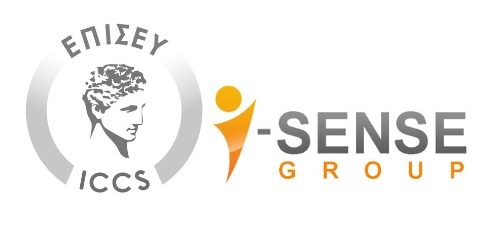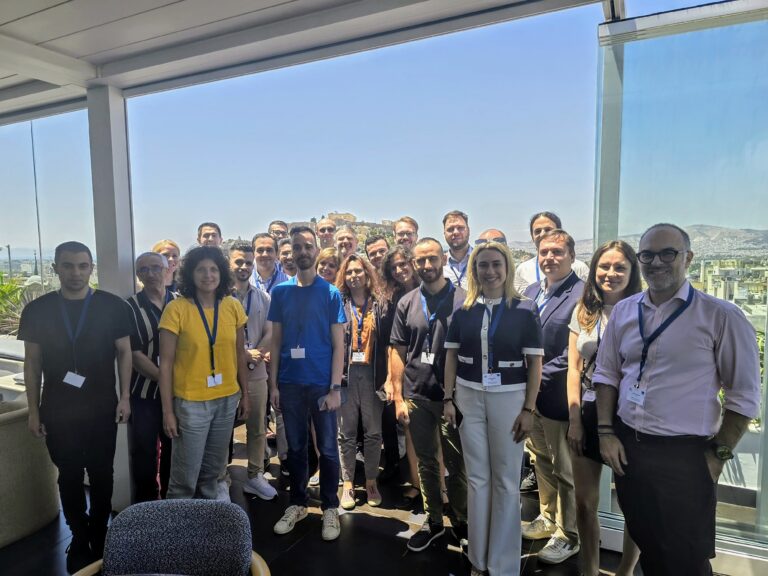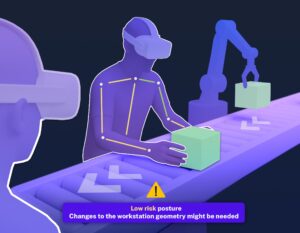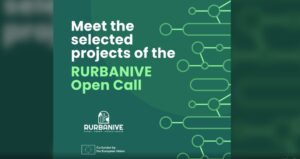On July 8th and 9th, the I-SENSE Group of ICCS welcomed the launch of HIDDEN (Hybrid Intelligence for Advanced Collective Perception and Decision Making in Complex Urban Environments), a new EU-funded project under Horizon Europe. With nearly €5 million in funding and support from the CCAM Partnership, HIDDEN aims to make urban mobility safer by helping automated vehicles detect what they currently can’t see—pedestrians, cyclists, and other road users hidden behind obstacles.
Urban environments are full of visual blind spots caused by parked cars, buildings, and trees. These occlusions are a major safety concern, especially for vulnerable road users (VRUs). Current detection systems often struggle in such scenarios, with VRU recognition rates dropping below 65% when individuals are fully occluded. HIDDEN tackles this challenge by leveraging and enhancing Collective Awareness using Vehicle-to-Everything (V2X) communication and artificial intelligence. This allows vehicles to build a more complete picture of their surroundings, collectively interpreting data from other vehicles, infrastructure, and even road users to see beyond what their own sensors can detect. What truly sets HIDDEN apart is the use of Hybrid Intelligence (HI)—a fusion of human and machine intelligence. This approach allows automated vehicles to not only detect hidden objects but also make decisions that are ethically and legally grounded and aligned with human behaviour.
“HIDDEN goes beyond conventional AI,” said Dr. Angelos Amditis, HIDDEN Coordinator and R&D Director at ICCS. “We’re bringing human judgement into the loop—so automated systems can act not just accurately, but wisely. By blending the precision of machines with human context, awareness, and ethics, we aim to make urban transport not only smarter but also safer and more socially attuned.”
To test its approach, HIDDEN will focus on four high-risk urban scenarios: a child running from behind a parked car, a cyclist in mixed-traffic zones, a road worker obscured by vegetation, and a vehicle hidden at an unsignalised intersection. Each case reflects complex, real-world challenges where improved perception and ethically grounded decision-making could prove life-saving.
Beyond technical performance, HIDDEN’s CCAM systems are being designed to reflect human driving styles, uphold ethical standards, and meet emerging regulatory requirements. The project will also work closely with stakeholders, including EU type approval bodies and UNECE working groups, to align its results with future standards and policy development.
The Consortium
HIDDEN brings together a diverse group of partners with complementary strengths. The consortium includes leading research institutes and universities, SMEs specialising in AI and machine learning, major players in the automotive sector, type approval authorities, social science researchers, and industry associations involved in standardisation. This multidisciplinary team ensures that technical development is informed by real-world needs, regulatory insight, and a strong understanding of human and social factors—covering the full path from research to implementation.
The ISENSE Group of ICCS coordinates the HIDDEN project, overseeing its overall management and strategic direction. Beyond coordination, ICCS leads the development of key technical components, including failsafe collective awareness algorithms and short-term trajectory prediction models tailored for vulnerable road users such as children and cyclists. We contribute to the integration of Hybrid Intelligence by incorporating real-time human input—like driver gaze tracking—into perception and decision-making systems. Our work spans both physical and simulation-based testing, supported by ICCS’s autonomous vehicle and CARLA-based driving simulator. ICCS also plays a central role in policy alignment, engaging with EU type approval bodies, UNECE working groups, and international stakeholders to help shape future CCAM standards. We are actively involved in three of the project’s core use cases: protecting a child darting from behind a parked car, a cyclist in mixed traffic, and a road worker hidden by vegetation.
HIDDEN isn’t just about developing smarter vehicles—it’s about building trust, aligning technology with human values, and paving the way for safer streets in cities across Europe.







